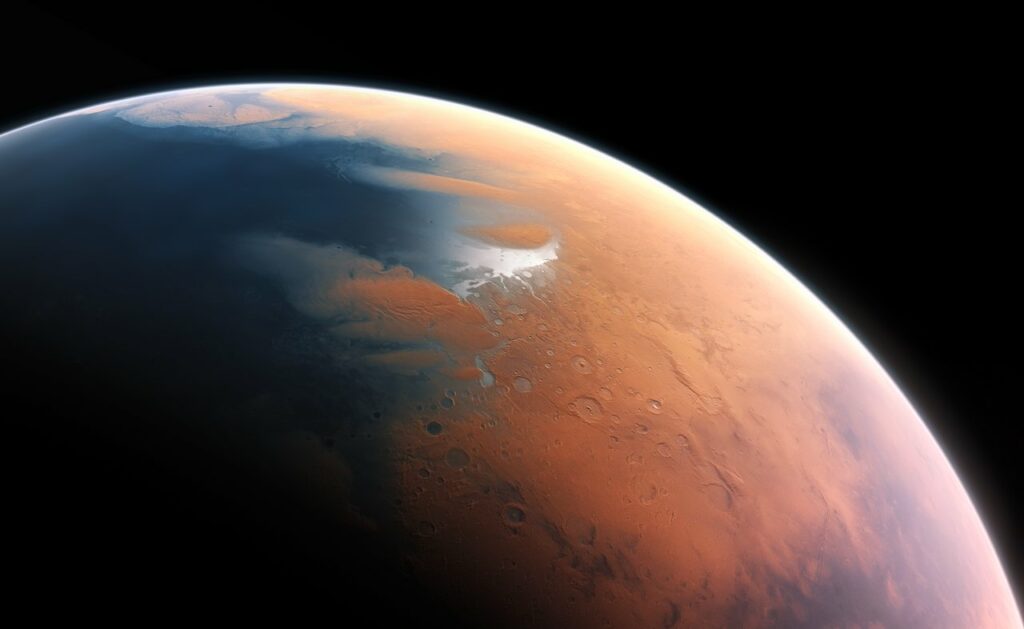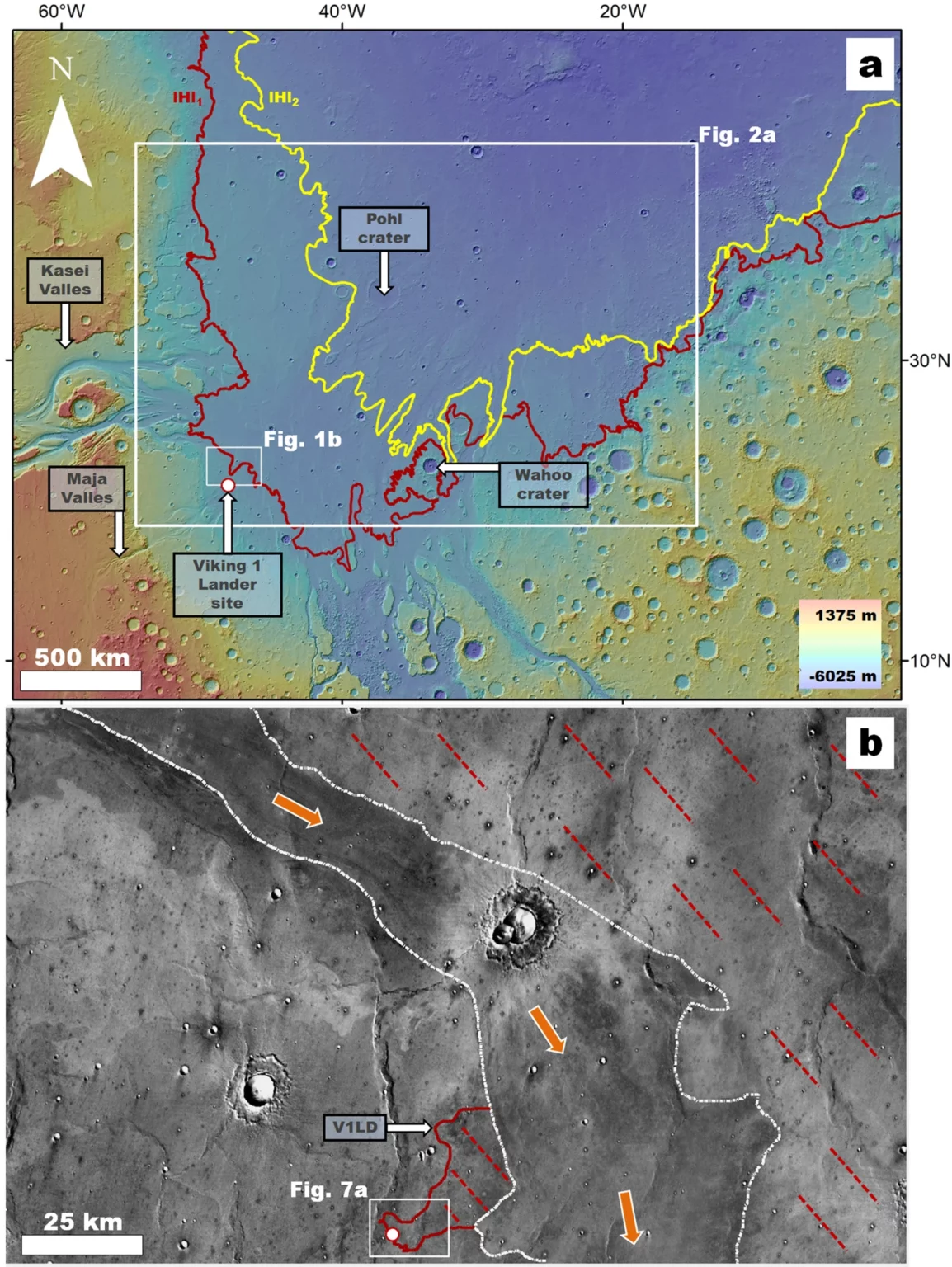An international team of researchers announced the discovery of an asteroid impact site that could cause a megatsunami on Mars. It resembles the famous Chicxulub crater, left after the impact of a celestial body that led to mass extinction on Earth.
Traces of megatsunami on Mars
In 2016, an article was published in the journal Nature, the authors of which reported the discovery of traces of a megatsunami on Mars that occurred 3.4 billion years ago. Their conclusion was based on the results of data analysis of the Mars Odyssey spacecraft, which found traces of unusual sedimentary deposits in the north of the Arabian Terra and on the nearby Chryse Planitia. It is believed that in the past, the Northern Ocean of Mars was located on this territory. The researchers noted that the hypothesis first appeared to them after visiting Japan and studying the consequences of the 2011 tsunami.

According to scientists, the megatsunami was caused by an asteroid falling into the Northern Ocean, which raised a giant wave. It moved hundreds of kilometers deep into Martian land, washing away the coastline and bringing rocks up to ten meters to the surface. When the water went into the ocean, these boulders cut through the characteristic channels found in the Mars Odyssey images.
Martian equivalent of a Chicxulub
As part of their new research, scientists have tried to find a trace left after the fall of this asteroid. To do this, they analyzed maps of the surface of the Red Planet. They managed to find a funnel suitable in size and age: a 110-kilometer crater located on the territory of the Vastitas Borealis (Great Northern Plain) of Mars. The formation received the unofficial designation Pohl.

According to scientists, in the past, this territory was occupied by the Northern Ocean of Mars and was located at 120 meters below sea level. The computer model showed two possible variants of the formation of the Pohl crater. It could occur when a nine-kilometer asteroid fell, colliding with strong surface resistance, which led to the release of 13 million megatons of energy in TNT equivalent. Or, the crater could remain after the fall of a three-kilometer asteroid that encountered weak surface resistance, which led to the release of 0.5 million megatons of energy.
In both scenarios, the impact raised a giant wave that spread to 1.5 thousand km from the epicenter. The simulation results suggest that the height of the tsunami caused by the fall of the three-kilometer asteroid should reach 250 meters. According to scientists, they found a number of similarities between the Pohl and Chicxulub — a crater on the Yucatan Peninsula, which remained from a celestial body that supposedly killed dinosaurs 66 million years ago. It is believed that its impact also led to the formation of megatsunami, which height reached 200 meters.
According to https://www.nature.com
Follow us on Twitter to get the most interesting space news in time
https://twitter.com/ust_magazine
